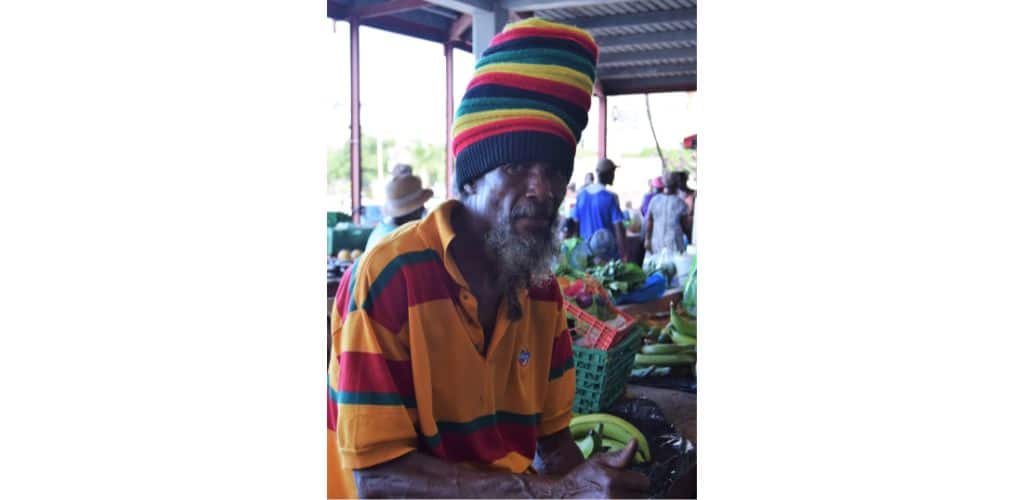A federal court has ruled that a photographer may not recover certain profits indirectly related to authorized copies of his work.
The case is Graham v. Prince, No. 15-CV-10160 (SHS), 2023 WL 5917712 (S.D.N.Y. Sept. 11, 2023).
As the court explains, the action arose out of photographer Donald Graham’s claim that well-known “appropriation artist” Richard Prince infringed Graham’s copyright in a photograph entitled Rastafarian Smoking a Joint when Prince created and sold a work featuring that photograph.
As the Museum of Modern Art explains,
Appropriation is the intentional borrowing, copying, and alteration of existing images and objects. A strategy that has been used by artists for millennia, it took on new significance in the mid-20th century with the rise of consumerism and the proliferation of images through mass media outlets from magazines to television.
Prince’s work, called Untitled (Portrait of Rastajay92) was displayed along with other works collectively titled New Portraits in 2014. Graham also sued the Gagosian Gallery and its owner Larry Gagosian for infringement because the Gallery purchased and displayed Rastajay92.
Prince “creates” some of his works by taking others’ photos, posted on Instagram, manipulating the comments by reporting unwanted ones as spam, and then cropping the resulting image plus comments with his phone and printing it on a large Inkjet canvas.
Prince has sold his versions of Graham’s photo for prices from $500 to $8,000.
Graham first sent a cease-and-desist letter, then sued Gagosian for copyright infringement in 2015.
In May, a federal judge in New York refused to throw out two long-running copyright lawsuits against Prince based on the New Portraits series, one of them involving the Rastajay92 image, finding that Prince’s works weren’t sufficiently transformative to qualify for the “fair use” defense to copyright infringement.
Graham had sought damages for copyright infringement based not only on sales of the Rastajay92 image but also on sales of other non-infringing works in the New Portraits series, and on the increased value of Rastajay92 over the years.
As the latest opinion explains,
Graham counters that a reasonable jury could find that he is entitled to Gagosian Gallery’s revenues from sales of the other works in the New Portraits series because Rastajay92 was used to promote sales of the other works in the series, and because, according to Graham, the Gagosian Defendants have not met their burden of apportioning any profits not resulting from the infringement. In addition, Graham urges that a reasonable jury could find he is entitled to unrealized profits from the hypothetical resale of Rastajay92 because he alleges both 1) a causal connection between the infringement and unrealized profits, and 2) a method for determining the amount of unrealized profits.
Graham argued that
the buyers of these Other Works were allegedly influenced in their decision to purchase the Other Works by having seen Rastajay92 in promotions of the series, thereby generating indirect profits for Gagosian Gallery.
The revenue generated from the other works was approximately $1.32 million.
As the court noted,
Pursuant to 17 U.S.C. § 504(a), “an infringer of copyright is liable for either 1) the copyright owner’s actual damages and any additional profits of the infringer, as provided by subsection (b); or 2) statutory damages, as provided by subsection (c).”
Under subsection (b) of section 504,
The copyright owner is entitled to recover the actual damages suffered by him or her as a result of the infringement, and any profits of the infringer that are attributable to the infringement and are not taken into account in computing the actual damages. In establishing the infringer’s profits, the copyright owner is required to present proof only of the infringer’s gross revenue, and the infringer is required to prove his or her deductible expenses and the elements of profit attributable to factors other than the copyrighted work.
However, the court rejected Graham’s argument that his claim to the profits earned from the sales of the other works was similar to a claim to profits from sales of an anthology of poems containing an infringing work.
Said the court,
Plaintiff’s contentions to the contrary ignore the reality that each of the New Portraits was sold as a discrete and separate item, totally independently of each of the others and of the sale of Rastajay92.
The court also rejected Graham’s argument that he was entitled to a share of the increased value of Rastajay92 since Gagosian bought it.
As the court explained,
Graham’s theory is that an infringer is required to disgorge profits that have not yet been realized because if the infringer were to sell the infringing work, he might earn a profit upon the sale.
However, said the court,
Graham has pointed to no cases that have awarded profits on works not yet sold outside of the specific context of infringing architectural plans, and even in that context, some courts have declined to take this approach.
Therefore, the court granted the defendant’s request to partial summary judgement on the issue of damages.
Just like the haiku above, we like to keep our posts short and sweet. Hopefully, you found this bite-sized information helpful. If you would like more information, please do not hesitate to contact us here.


